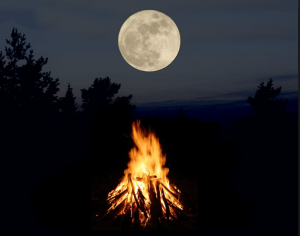 Story is going through a dark time. We have over-fished the narrative seas, giving not a single nod to sustainable practices. The need to produce quantity (in marketing and advertising, especially) over quality has diminished many audiences’ discernment to demand quality. By doing so, we have become perfectly satisfied with the third-rate. Like mass-produced products vs. carefully crafted-by-hand ones, stories, too, are due for a reboot, to repair a mass tolerance for crap.
Story is going through a dark time. We have over-fished the narrative seas, giving not a single nod to sustainable practices. The need to produce quantity (in marketing and advertising, especially) over quality has diminished many audiences’ discernment to demand quality. By doing so, we have become perfectly satisfied with the third-rate. Like mass-produced products vs. carefully crafted-by-hand ones, stories, too, are due for a reboot, to repair a mass tolerance for crap.
How can we produce less crap and more authentic tales? How can content producers of all breeds overcome a perceived need/desire to create stories quickly, sacrificing quality, and instead allow stories to be developed in earnest, allowed the care and craft they each deserve?
Try throwing a rock across the Web without hitting one of the many articles, posts, books, podcasts or interviews focused on the use of telling stories in business. Arguably, they kick the magic out of the hat, addressing the way stories should be used in marketing goods and services (yawn), making the word ‘storytelling‘ one of the most over-used words and misguided ideas out there. Really. But they never tell you how to tell a good one, not even how to tell a good one from a bad one.
We all tell stories. All day long. Generally speaking, we don’t think much about it or think about why we tell them. I never thought about why until 2000 when my life and work carried me to Alaska. I found myself among the Alaska Native tribal cultures. There are many, each with their own language, customs and protocols. Part of my work involved becoming conversant in these, if only enough to extend proper timing and respect as I navigated my way through situations that required it. This took time and attention.

Though the various cultures are distinct, they have many things in common. One radical one is this: Alaska Native cultures hadn’t any alphabets or written language until recently. Instead, across millennia, these cultures relied on verbal (storytelling, in-person) and visual (carvings, such as totem) in order to transmit stories. This takes time, attention and thoughtful intention. One does not carve a totem overnight, nor gather the richness of a tale in a week. Great attention to detail is given to each practice. In these cultures, rich storytelling crafts like these took time and thoughtful curation in order to cultivate and protect.
In our technological innovation, have we scrapped time and thoughtfulness for expediency? In my culture, we certainly have many more sophisticated storytelling tools. We take for granted how easily stories and personas can be whipped up in next-to-no-time for the sake of one goal or another.

With the right delivery, story is everything. No effects are needed. Nary a single prop. Story has accomplished massive change in and even across cultures. Story has replenished spirits, spinning yarns of hope in times of adversity. Story has created rituals and markets.
Since before we knew whatever it is we pray for now, when we all lived in the forest, we told tales as a fire built strong and bright licked up our back to keep predators at bay. Since there has been anyone sentient enough to notice, we have crafted narratives. It was, is and will always be about story. When the dust settles and all is left to the rain, it endures, adrift in the air. Story makes us who we are.